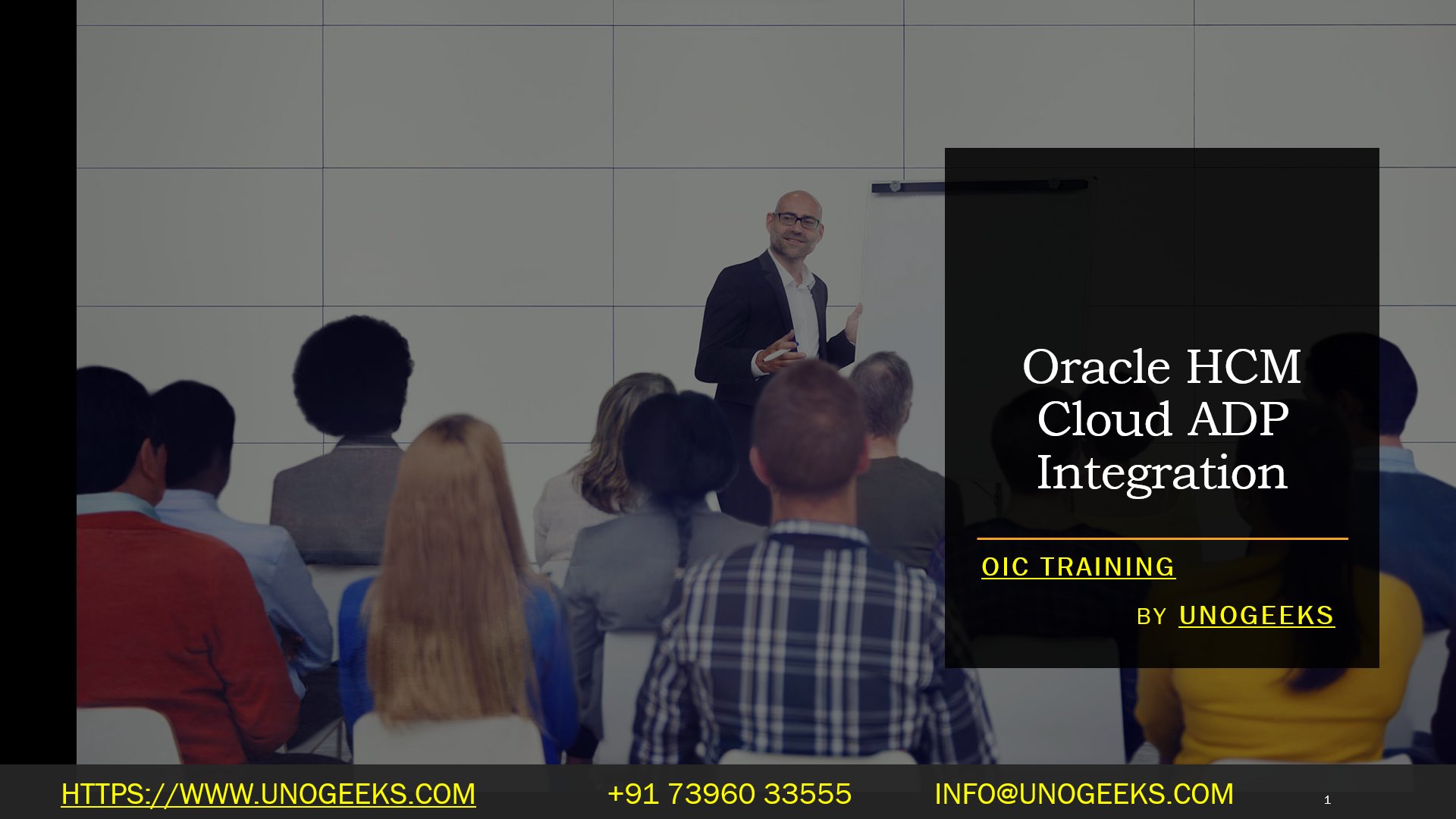Oracle HCM Cloud ADP Integration
Integration between Oracle HCM (Human Capital Management) Cloud and ADP (Automatic Data Processing) can offer seamless HR functionality, combining the strengths of both platforms. ADP is typically used for payroll and other HR services, while Oracle HCM Cloud offers a complete suite of human resources applications that can be tailored to fit the specific needs of an organization. Integrating the two can provide an efficient way to manage various aspects of HR, including recruitment, payroll, benefits, and more.
Here’s an overview of what the integration might entail:
Understanding the Requirements: Before you start the integration, you’ll need to understand exactly what data and processes you want to integrate between the systems. Commonly, this might include employee information, timesheets, payroll, and benefits data.
API Integration: Both Oracle HCM Cloud and ADP usually offer APIs that can be used to integrate the systems. You would need to use these APIs to create a connection between the two systems, ensuring that data can be seamlessly transferred between them.
Data Mapping and Transformation: You’ll need to identify how data in one system corresponds to data in the other. This might require transforming the data into the right format or mapping fields in one system to fields in the other.
Security and Compliance: Ensuring that the integration complies with all relevant legal and regulatory requirements is essential. This may include ensuring that the data is transferred securely and that both systems are compliant with relevant laws like GDPR or other local privacy laws.
Testing: Thorough testing is needed to make sure that the integration works as intended. This can include testing various scenarios and ensuring that data is transferred accurately and without errors.
Monitoring and Maintenance: Once the integration is live, regular monitoring is necessary to ensure that it continues to function correctly. This might also require periodic updates or maintenance to ensure that the integration continues to meet the organization’s needs.
Utilizing Pre-built Connectors: Depending on the specific requirements, there might be pre-built connectors or integration platforms that can simplify this integration. Vendors like Oracle and ADP might also provide support or guidance for the integration.
Consider Professional Services: If the integration is complex, it might be beneficial to engage a third-party integration specialist or consulting firm with experience in integrating these specific systems. They would have the expertise to ensure that the integration is done correctly and efficiently.
Documentation and Training: Finally, documenting the integration process and providing training to relevant staff ensures that the organization can support and maintain the integration going forward.
Oracle Integration Cloud (OIC) Training Demo Day 1
Conclusion:
Unogeeks is the No.1 Training Institute for OIC. Anyone Disagree? Please drop in a comment
Please check our Oracle Integration Cloud Training Details here OIC Training
You can check out our other latest blogs on Oracle Integration Cloud in this OIC Blogs

———————————-
For Training inquiries:
Call/Whatsapp: +91 73960 33555
Mail us at: info@unogeeks.com
Our Website ➜ https://unogeeks.com
Follow us:
Instagram: https://www.instagram.com/unogeeks
Facebook: https://www.facebook.com/UnogeeksSoftwareTrainingInstitute
Twitter: https://twitter.com/unogeeks
